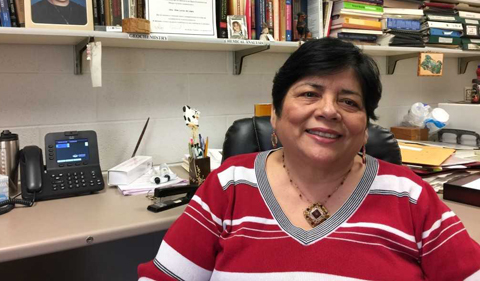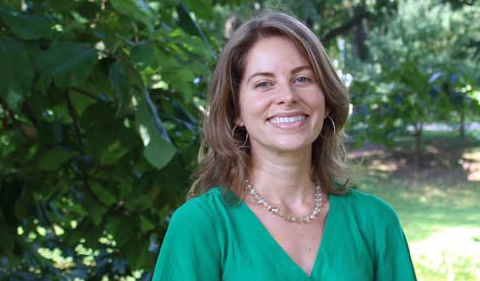
Dina López in her office in Clippinger Labs
By Ling Xin
NQPI editorial intern
Nanoscale and Quantum Phenomena Institute 2019 Spring Newsletter
When hydrogeochemist Dina López first came to Ohio University 24 years ago, she was already an expert in a widespread environmental problem in the Athens area: acid mine drainage. The brownish streams are a remnant of the state’s legacy of coal exploitation, and the chemicals they contain— such as pyrite—have been contaminating drinking water and killing fish inhabiting local rivers.
With her expertise in chemistry, physics, and geology, López led a multidisciplinary research team to address this issue. They established “beautiful correlations between the velocity of the flow, the chemistry of the water, and the bacteria in the stream,” López said. The correlations can be used to evaluate remediation measures, such as adding alkaline substances to reduce acidity.
Similar to abandoned mines, active mines also pose pollution risks. Last year, López’s team developed a model to predict how an underground mine is likely to form a pool, overflow, and discharge acidic waters into the environment.
Outside Ohio, López has been concerned about environmental problems and public health in her home country, El Salvador. An important research topic she is interested in is how volcanic activity releases arsenic, a toxic chemical that is associated with various cancers, into the water, soil, and air, impacting humans.
Arsenic and heavy metals can arise from low quality agrochemicals such as pesticides and fertilizers, which is a probable cause for the exponential growth of chronic kidney diseases in El Salvador and neighboring countries, López explained. She and her colleagues are using a statistical measure known as geographical weighted regression to assess the relationship between the environmental variables in those countries and the prevalence of kidney disease.
“Human health is not my specialty. However, as I started to work in the environmental issues related to this disease and was able to know the patients and see young faces dying, that’s really heartbreaking,” López said. “When law enforcement is not in place, what we can do is to educate people of the consequences and the ways to protect themselves.”
This year, López is working with Sebastian Barket, a new master’s degree student with a biology background who is returning to the multidisciplinary study of acid mine drainage. “Ohio has contributed a lot to the wealth of this country with coal mining, but the environmental costs are high, too,” López said. While the acidic streams can exist for hundreds of years, all remediations we have today are temporary—there is still a lot of work to do for scientists like López.



















Comments